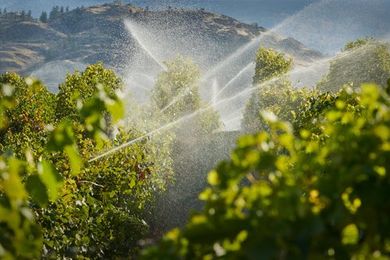Blog Layout
Admin • Apr 20, 2018
4 Instances When Replacing Your Vineyard Irrigation System Is Helpful

A vital component in the success of your vineyard is a water irrigation system. When there are failures in this system, the quality of the crops and products you're able to deliver is negatively impacted.
The key to avoiding a more substantial problem down the line is the ability to recognize the indicators that often signal a water irrigation system in need of replacement. Learn what some of these red flags look like so that you can get ahead of the problem.
1. Expansions
If you expand your vineyard at any point, you should consider the possibility of updating your entire irrigation system. The most critical component of an irrigation system is watering efficiency, and a crucial part of delivering in this area is understanding the needs of each specific vine.
Where the vines located, such as on an incline, and its level of exposure to the sun can influence the crops watering needs. For this reason, the new crops may have an entirely different set of requirements than your existing vines.
If you simply duplicate the irrigation system you already have, watering efficiency and crop health could suffer. You might discover that a micro-irrigation system is the better option, as these systems deliver more targeting watering.
2. Repair Cost
Part of maintaining an irrigation system is routine maintenance, including flushing the system to remove potential contaminants and adjusting the filters. If you've been operating for several years, you probably have a good gauge on how much you tend to spend on maintenance on average each year.
A considerable uptick in the frequency or cost of irrigation system repairs offers at least some sign that its days may be numbered. An increase in your water supply cost may also point to a system that is not operating as efficiently as it once did and needs replacement.
Keep in mind that as your repair costs increase, your potential for profit declines. A new system might seem like a significant initial cost, but it will save your company over the years.
3. Pressure Control
A well-functioning irrigation system will deliver water to crops at a steady pressure rate. Any changes in water pressure should be self-made adjustments. But a failing irrigation system may start to experience pressure peaks with periods where the pressure of the water is too low or too high, and both are troublesome.
Water pressure that is too low will lead to under-watering, which is harmful to the crop, especially for vines that have matured. Periods of high pressure overly tax the irrigation system and only accelerate the arrival of its already near demise.
High-pressure water levels can also harm crops. It's important to note that a failing sensor can also cause overwatering, as it will not deliver an accurate account of the soil's moisture levels. If overwatering is restricted to a specific area, this could be the culprit.
4. Age
The age of your irrigation system is an essential factor when it comes to function. A high-quality irrigation system can last upwards of two-decades, but this is the exception — not the general rule. The precision at which the system was originally installed, its frequency of use and whether the system was maintained correctly all influence the term of its lifespan.
However, once you approach the 20-year mark, it's wise to consider a replacement so that you can get ahead of any potential problems. For vast vineyards with more than one irrigation system, keep a separate record of each system to track age accurately.
If your system is displaying any of these warning signs, apply this information to help you move toward a replacement. Contact us
at Waterford Irrigation Supply to learn how we can assist you with a new irrigation system design.
Waterford Irrigation Supply
12500 Bentley Street
Waterford, CA 95386
Phone:
209-874-1386
Fax:
209-874-1381
Email:
sales@waterfordisi.com
Waterford Irrigation Supply - Atwater Store
7016 Atwater Jordan Road
Atwater, CA 95301
Phone:
209-358-1685
Email:
sales@waterfordisi.com
Be the first to review us
Your feedback is important!
Business Hours
Mon – Fri: 8 a.m. – 5 p.m.
CAIA (California AG Irrigation Association)
Free Estimates, Free Consultation






Content, including images, displayed on this website is protected by copyright laws. Downloading, republication, retransmission or reproduction of content on this website is strictly prohibited. Terms of Use
| Privacy Policy

